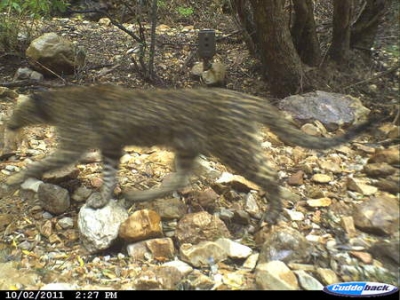The two photos below were taken at the same site, close to the Huisrivier Pass between Calitzdorp and Ladismith within 1 minute of one another. The blurring on the leopard photo is an indication that the leopard was moving quickly - probably to get away from the donkey! The fact that the cameras recorded more photos of the donkey (seemingly unharmed) afterwards suggests that the leopard was running away from the donkey, rather than trying to attack.


Donkeys are relatively large animals by the standards of Cape fauna, and can be quite fierce and are sometimes used to protect stock from predators. Feral donkeys are quite common in the Little Karoo, and are thought to be too large to be viable prey for leopards, although occasional incidents of leopards killing donkeys have been reported in the area. Some people have proposed introducing donkeys into natural areas to increase the amount of prey available to leopards, thus reducing conflict. However, these photos and our leopard diet data suggests that all that this would achieve is to increase the number of feral donkeys roaming the veld!
















